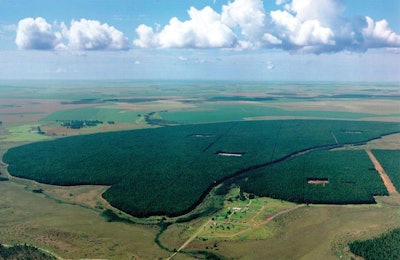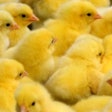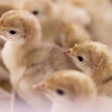
Our climate is changing, and people and governments around the world are seeking ways to protect our planet. Because food production is a driver of climate change, our challenge will be to feed the world’s expanding population with a reliable and quality source of nutrition, while reducing the effects of production.
One promising solution lies with poultry. Chicken production is naturally gentler on the environment than other livestock. On top of that, chicken companies have been working for decades to breed efficiencies that not only produce healthier birds, but also make commercial chicken production environmentally responsible.
Poultry: the responsible protein
Poultry greenhouse gas emissions are naturally low. A study by the global Organisation for Economic Cooperation and Development (OECD) shows that the chicken, as a species, has a smaller carbon footprint than all other meat-producing animals, emitting one-quarter of the harmful gases. One reason is that other livestock produce greater amounts of methane during their digestive processes.
Another is that chicken production demands far fewer resources. As an example, a 2014 article by Rachel Nuwer in Smithsonian Magazine made the case that beef production requires 28 times more land, six times more fertilizer and 11 times more water than chicken. That adds up to about five times more greenhouse gas emissions.
Using less land also means less destruction of natural wildlife habitats.
Chickens are also more water efficient than other livestock. A study by the Bill and Melinda Gates Foundation has found that one half to a full pound (0.22-0.51 kg) of chicken meat can be produced per 264 gallons (1,000 liters) of water, compared with close to one-sixth of a pound (0.082 kg) of beef for the same amount of water. Thus, beef production can use up to six times more water than chicken.
And, it has been proven that chicken production also requires lower amounts of resources, such as electricity and gas, than other livestock.
Sustainable intensification: breeding a better environment
Sustainable intensification has become a global aspiration in the quest to increase food production from existing farmland while lowering pressure on the environment. Over the past decade, broiler breeding companies have put significant resources and effort into creating efficiencies in chicken production that support sustainable intensification.
One such efficiency is a healthy feed conversion rate (FCR). FCR indicates biological efficiency by measuring the kilograms of feed required for every kilogram of live weight produced.
A concrete example of the benefit is that today’s farmers can raise a healthier and more robust 2.4 kg chicken in 35 days using 3.6 kg of feed and a very efficient 1.5 FCR. That was not so 30 years ago, when it took 3.2 kilograms of feed for a 1.36-kilogram bird with a 2.35 FCR over the same time span.
Another benefit is in the area of land use. As the global population continues to swell, agricultural land will become more and more limited. With a lower FCR, less land will be needed to grow feed. The grain not used for poultry feed can be used for other purposes, and the land can be repurposed for other crops.
As an example, a breeding gain of 2 points in FCR has translated to land savings of about 1.6 million acres (0.656 million hectares) per year. That is twice the size of Luxembourg.
The important conclusion is that poultry’s naturally lower resource consumption, coupled with innovative breeding efficiencies, means fewer resources are required to produce an increasing volume of high-quality chicken meat.
Sustainable food for the future
Through dedicated, consistent and balanced breeding programs, more efficient and healthier birds can now be grown in a responsible way that is less demanding on resources and kinder to the planet. Chicken is the best solution to feed our growing communities with quality protein, and is the sustainable option for the foreseeable future.
Sustainable poultry production driving industry advances

















